Medicinal & Aromatic Plants
Open Access
ISSN: 2167-0412
+44 1300 500008
ISSN: 2167-0412
+44 1300 500008
Case Report - (2022)Volume 11, Issue 3
During the pandemic of COVID-19 and due to the absence of conventional drugs against this virus, citizens have requested to look for other ways to treat or minimize the negative impact of this epidemic. In Morocco, the population has used several medicinal plants to relieve and prevent against covid-19. The present work was carried out to elaborate a list of medicinal plants used during COVID-19 by the population living in different areas of the Central High Atlas Mountains, Morocco. The fieldwork was carried out between June 2020 and February 2021, corresponds to the period of the extension of coronavirus. The data were collected through questionnaires and other means (Telephone, WhatsApp, Face book). The results obtained in this study showed that COVID-19 influences the dietary habits of the citizens of the study area, especially on the frequency of use of medicinal plants that increased during this pandemic. The information collected from the survey also showed that the inhabitants of the Central High Atlas of Azilal use during COVID-19 a total of 50 species of medicinal plants belonging to 18 families, of which the most used species were mainly herbs (68%) and trees (20%) like Allium sativum, Trigonella foenumgraecum, Chenopodium ambrosioides, Lavandula pedunculata, Thymus satureioide, Eucalyptus globulus, Zingiber officinale, Alpinia officinarum, Thymus Zygis, Rosmarinus officinalis, Aloysia citriodora, Mentha pulegium. Based on the ICF value the five symptoms treated were the fever (ICF=0.90), followed by cough (ICF=0.79), headache with (ICF=0.68), breathing difficulties (ICF=0.61), diarrhea (ICF=0.31), and fatigue (ICF=0.22). The results showed that medicinal plants in the study area occupy an important place in the treatment of the principles similar to those of the coronavirus. In addition, these plants used in the region could be a database for further research in the field of antiviral drug discovery and in the search for new natural substances.
COVID-19; Morocco; Medicinal plants; The Central Igh tlas mountains; Morocco
Coronavirus disease (COVID-19) is a respiratory syndrome coronavirus 2 (SARS-COV2) infection that began in Wuhan, China, and quickly spread throughout the country and around the world [1,2]. On March 11, the World Health Organization (WHO) classified COVID-19 as a pandemic [3]. The symptoms noted in infected patients are fever, cough, fatigue, abdominal pain, headache, nausea, and other gastrointestinal problems [2-6]. Currently, this new coronavirus is constituted as one of the major pathogens that mainly target the human respiratory system and poses a significant threat to public health. Until today, more than 11 million cases of COVID 19 have been reported worldwide, with more than 2 million deaths. In the present, although modern medicine is available, the use of plants is still widely used to treat ancient diseases or those that have emerged in recent years. Indeed, approximately 80% of the population in developing countries depend on traditional medicine for their primary health care needs [7,8]
The Moroccan flora is the second most diverse in the Mediterranean region and the richest in North Africa, with about 6552 species of which the number of medicinal plants is estimated at about 800 species [9,10] This richness and diversity of flora have allowed the inhabitants of Morocco for a long time to use a large number of plants to fight against diseases and epidemics. In addition, previous studies have shown that several medicinal plants have been used to treat and remedy many respiratory diseases and signs of symptoms similar to those of COVID 19 [11,12]. Despite the importance of medicinal plants to remedy the main symptoms of the new coronavirus such as fever, influenza, and headache, diarrhea and respiratory disorders, in Morocco until today, no in vitro studies and clinical trials to examine the effect of these plants on SARS-COV2 have been done. On the other hand, in some countries, traditional Medicine and herbal Medicine have tried to provide solutions to COVID-19. For example, in China, a recent study has shown that Artemisiaannua contains four molecules having an inhibitory effect on SARS-COV2 [13]. In the same country, trials on herbal products such as Qing FeiPai Du Tang have shown its effectiveness in improving the condition of 98% of patients affected by covid-19 [14]. Another recent study also reviewed a database on medicinal plants containing photochemical substances that can inhibit the enzymatic activity of SARS-COV-2 3CLpro [15].
It is important to note that there are similarities in symptoms between COVID-19 and the earlier beta coronaviruses, such as influenza, fever, cough, dyspnea, and headache [16,17]. As a result, the Moroccan population has been using herbal remedies for protection and prevention against diseases with symptoms similar to those of coronavirus disease.
The Azilal region, which is part of the central High Atlas, includes vast forest areas where the natural vegetation is still more preserved. This richness and diversity of medicinal flora offer the local population a rich knowledge of traditional phytotherapy. The choice of this study area is justified by its richness in medicinal plants as well as its strong use by the population of the region. The objective of this research work is to make a diagnosis of plants used by the population of the study area and their effect on health and this based on field surveys.
Presentation of study area
The study area corresponds to the Eastern mountain area of Azilal Province, and lies between 32°28′-31°58′N and 6°34 W with a total area of 10, 758 ha. The climate of this region is the Mediterranean, characterized by a very cold winter and a very hot summer. It varies from a humid climate towards the tops of the high mountains to a sub-arid climate under the mountain ranges. Annual rainfall varies between 300 and 750 mm. economically, agriculture and livestock are the fundamental component of the rural economy throughout the region. In most cases, these are a traditional farming and extensive livestock herding. According to the General Census of Population and Housing 2014, this region has 504, 501 inhabitants 89.86% of whom are real. The total human population in 2014 was about 86869, 70 whom are rural.
The study area includes very diverse mountainous areas with very different natural characteristics (geographical, climatic, ecological, floristic...). The study area is among the regions known for their floristic diversity with the presence of many species of medicinal plants and a particularly high rate of endemism. It is for exemple: Myrtus communis, Pistacia lentiscus, Pistacia atlantica, Juniperus thurifera, Artemisia herba-alba, Thymus maroccanus, Thymus satureioides, Lavandula pedunculata [18,19].
Samples of 310 citizens were surveyed in seven cities and villages: Azilal, Tagleft, Anergui, ZaouitAhensal, Tabant, Ouaouizaght and Demnate. The dialogue was done in Amazigh or in Arabic depending on the case (Figure 1).
Figure 1: Geographical location of the study area.
The state of spread of COVID-19
To date (March 27, 2021), Morocco has recorded 494, 849 cases of infection with COVID-19, including 8804 deaths and 482,084 people cured, while the number of cases excluded after negative results amounts to 59, 861. In the region of Azilal, the number of cases infected with this virus was relatively low compared to other regions of the kingdom. Figures 2 and 3 show the distribution and evolution of confirmed cases in Morocco.
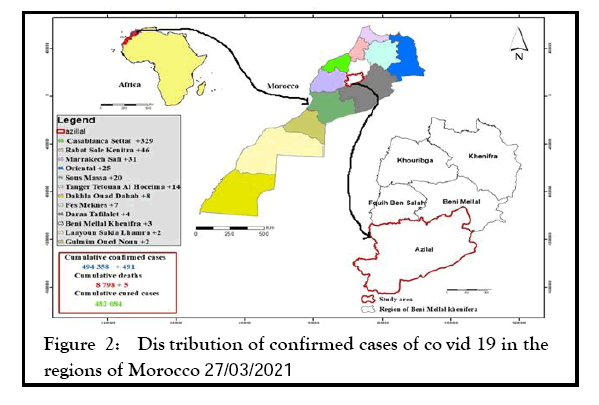
Figure 2: Dis tribution of confirmed cases of co vid 19 in the regions of Morocco 27/03/2021
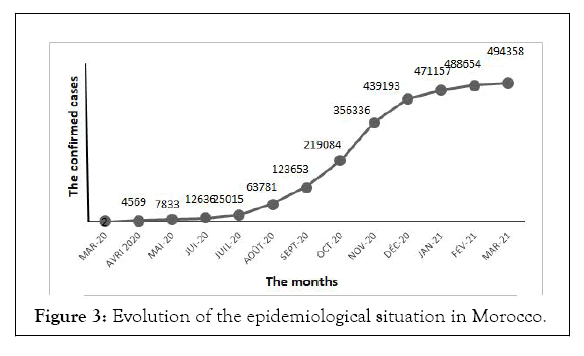
Figure 3: Evolution of the epidemiological situation in Morocco.
Methods of data collection
The data collection was carried out through a questionnaire that aims to collect information on the inhabitants and the plants used in the treatment and prevention against symptoms similar to those of the coronavirus (COVID-19) in the Azilal region. The survey of the local population of this region was conducted between June 2020 and February 2021. During this survey, the sanitary protocol was respected in order to avoid any risk of contamination. The main questions asked are presented in Table 1.
| The main questions dedicated to the inhabitants of the study area |
|---|
| Q 1: Are you male or female? |
| Q 2: How old are you? |
| Q 3: Do you live in a rural/urban area? |
| Q 4: Have you experienced symptoms similar to those of covid-19? If yes, which one(s)? |
| Q 5: Do you use any remedy(s) for the symptoms developed? If yes, is it medication/phytotherapy? |
| Q 6: If you used the plants, what are these plants (Name of the plant)? |
| Q 7: How do you prepare these plants? |
| Q 8: How often do you use medicinal plants (before and during the pandemic)? |
Table 1: The main questions dedicated to the inhabitants of the study area.
Data analysis
The data obtained and collected were entered and statistically analysed by the computer software SPSS (System Package for Social Sciences, version 23). Two quantitave indice value were calculated to analyse the data using theUse Value (UV) and The informant consensus factor (IFC) . In addition, Arc GIS 10.8 software was used to obtain maps of the information collected in the field.
The Informant Consensus Factor (ICF): The informant consensus factor was calculated to seek agreement among informants on the reported remedies for each disease group [20]. The ICF value ranges from 0 to 1. A high ICF indicates that there is a high degree of agreement or shared knowledge between the participants on the medicinal uses of a particular species for treating one of the main symptoms of COVID-19 disease. Low ICF value indicates that the informants do not agree or do not share knowledge on the uses of specific plants used to treat a category of coronavirus disease [21]. ICF is calculated using the following formula:
ICF=Nur-Nt/(Nur)-(1)
Where “Nur” refers to the total number of use reports for each disease cluster and “Nt” refers to the total number of species used for that cluster.
The Use Value (UV): The Use Value (UV) was calculated using the formula below [22]:
UV=∑/N
Where, “∑ “the total number of user ports per plants and N is the total number of respondents interviewed. High UV values are obtained when the species with a high level of use, while a low UV value indicates while indicates fewer use reports cited by the respondent.
Results of the present survey revealed that medicinal plants have an essential role in the treatment of ancient and new diseases, such as COVID, that have emerged in recent years. The potential use of medicinal plants and species of these plants involved in the treatment of the principles signs of COVID-19 are analyzed and discussed in the following section
Impacts of COVID-19 on dietary habits
Medicine (21%). The population that uses more medicinal plants is the one in small centers and in rural areas. On the other hand, the consumption of plants by urban dwellers remains somewhat limited. Concerning the academic level of the respondents using medicinal plants, the results show that 74.19% are illiterate, while 16.12% have a primary level and 9.67% have a secondary level. Moreover, medicinal plants are used almost equally by women and men. The survey results showed that COVID-19 influences the behavior of the population towards medicinal plants. Indeed, high consumption of medicinal plants was noticed during the pandemic. This is to strengthen the immune system [23-25]. Figure 4 shows the outcome of the frequency of medicinal plant consumption before and during the period of COVID-19.
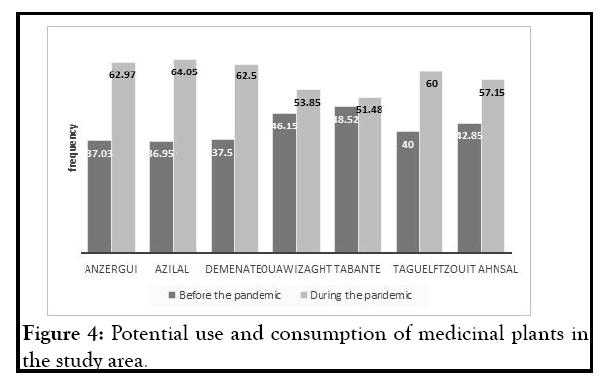
Figure 4: Potential use and consumption of medicinal plants in the study area.
Medicinal plants used by the local population
The floristic analysis of the plants used by the population in the stud yarea showed that respondents used a total of 50 species belonging to 18 families for the prevention and treatment of COVID-19. The most popular families are Lamiaceae and Apiaceae, which have 16 and 4 species, respectively, followed by Cupressaceae, Asteraceae, Liliaceae, Verbenaceae, Zingiberaceae, and Myrtaceae, which each have three species, and the remaining ten families have only two or one species (Table 2). These data are consistent with previous studies that reported that Lamiaceae, Apiaceae and Asteraceae are more used in the treatment of diseases present in the three respiratory disorders similar to that of COVID 19 in the High and Middle Atlas of Morocco [26-28]. These botanical families are also known by their therapeutic uses in different regions in Morocco [29]. These results may explain the observed exploitation of these plants by the population who used them not only to remedy old diseases but also emerging and new diseases like COVOD-19.
| Botanicale family | Species | Local name | statut | Habit | Part Used | Mode of preparation | Use values |
|---|---|---|---|---|---|---|---|
| (UV) | |||||||
| Amaranthaceae | Chenopodium ambrosioides L. | M’khinza | Wild | Herb | Leaves | Decoction /infusion | 0.77 |
| Amaryllidaceae | Allium cepa L. | Azalim | Cultivated | Herb | Bulbs | Decoction/ Infusion | 0.29 |
| Allium Sativum L. | Touma | Cultivated | Herb | Infusion /Cataplasm | 0.85 | ||
| Pistacia atlantica Desf. | Iguie | Wild | Tree | Leaves and fruits | Decoction /Powder | 0.05 | |
| Anacardiaceae | Pistacia lentiscus L. | Tidaete | Wild | Tree | 0.17 | ||
| Ammodaucus leucotrichu Coss. and Dur. | Kamoun soufi | Wild | Herb | Leaves and Stem | Decoction/ Infusion | 0.015 | |
| Apiaceae | Coriandrum sativum L. | kazbour | Cultivated | Herb | Fruits and flowers | Decoction/Powder | 0.032 |
| Cuminum cyminum L. | Kamoun | Wild | Herb | Seeds | Infusion | 0.38 | |
| Petroselinum sativum L. | Meadnouss | Cultivated | Herb | Leaves and Stem | Infusion | 0.11 | |
| Asteraceae | Artemisia absinthium L. | Chiba | Wild and cultivated | shrub | Leaves and Stem | Infusion/decoction | 0.2 |
| Artemisia herba-alba Asso. | Chih | Wild | herb | 0.1 | |||
| Matricaria camomilla L. | Babounj | Wild | Herb | Flowers | Infusion/decoction | 0.07 | |
| Juniperus oxycedrus L. | Tiqui | Wild | Tree | Leaves | Decoction/Infusion/Cataplasm | 0.02 | |
| Cupressaceae | Juniperus thurifera L. | Tawalt | Wild | Tree | 0.03 | ||
| Tetraclinis articulata (Vahl) Mast. | Aerar | Wild | Tree | 0.19 | |||
| Ceratonia siliqua L. | Tikite | Wild and cultivated | Tree | Leaves and fruits | Infusion/cataplasm | 0.02 | |
| Fabaceae | Trigonella foenum-graecum L. | Halba | Cultiverd | Herb | Seeds | Infusion/ Cataplasm | 0.78 |
| Calamintha officinalis (L.) kuntze | Manta | Wild | Herb | 0.028 | |||
| Lavandula dentata L. | lkhzama | Wild | Herb | 0.15 | |||
| Lavandula pedunculata (Mill.)Cav | Irghiolle | Wild | Herb | 0.74 | |||
| Lavandula stoechas L. | Lhalhale | Wild | Herb | 0.4 | |||
| Marrubium vulgare L. | Mreoua | Wild | Herb | Leaves and Stem | Decoction/ Infusion | 0.21 | |
| Mentha piperita L. | Naenaaeabdi | Cultivated | Herb | 0.012 | |||
| Mentha pulegium L. | Fliou | Cultivated | Herb | 0.48 | |||
| Mentha suaveolens Ehrh. | Timija | Wild | Herb | 0.42 | |||
| Lamiaceae | Mentha viridis L. | Naenaae | Cultivated | Herb | 0.03 | ||
| Ocimum basilicum L. | Taflioute | Cultuvated | Herb | 0.06 | |||
| Origanum majorana L. | Mardeidouch | Wild | Herb | 0.05 | |||
| Rosmarinus officinalis L. | Azir | Cultivated | Herb | 0.62 | |||
| Salvia officinalis L. | Salmia | Wild | Herb | 0.29 | |||
| Thymus maroccanus L. | Zaatere | Wild | Herb | Leaves and Stem | Decoction/ Infusion | 0.42 | |
| Thymus satureioides Coss. | Azoukeni | Wild | Herb | 0.72 | |||
| Thymus zygis L. | Zaitera | Wild | Herb | 0.64 | |||
| Lauraceae | Cinnamomum cassia J. Presl. | Lkarfa | Wild | Tree | Bark | Powder | 0.3 |
| Laurus nobilis L. | WarqatMousa | wild | Tree | Leaves | Decoction/ Infusion | 0.09 | |
| Lythraceae | Lawsonia inermis L. | Elhanna | Cultivated | Herb | Leaves | Cataplasm | 0.05 |
| Punica granatum L. | Romman | Cultivated | Tree | Peel | Infusion | 0.016 | |
| Eucalyptus globulus Labill. | Elcalyptous | Wild and Cultivated | Tree | Leaves | fumigation | 0.7 | |
| Myrtaceae | Eugenia caryophyllata Thunb. | Qranfel | Wild | Tree | Flower buds | Infusion | 0.37 |
| Myrtus communis L. | Rihan | Wild | Tree | Leaves | Cataplasm | 0.25 | |
| Oleaceae | Olea europaea L. | Zitoun | Wild and Cultivated | Tree | Leaves/ Fruits | Infusion/ Cataplasm | 0.32 |
| Pinaceae | Pinus halepensis Mill. | Tayda | Wild and Cultivated | Tree | Leaves | fumigation | 0.2 |
| Ranunculaceae | Nigella sativa L. | Habba Souda | Wild | Herb | Seeds | Infusion/ Cataplasm | 0.23 |
| Rosaceae | Rosa canina L. | Taghofert | Wild | Tree | Fruits/ Flowers | fumigation | 0.013 |
| Rubus fructicosus L. | Tabegha | Wild | Tree | Infusion | 0.03 | ||
| Verbenaceae | Aloysia citriodora Palau. | Louiza | Cultivated | Herb | Leaves | Infusion | 0.53 |
| Alpinia officinarum Hance. | Khoudenjal | Cultivated | Herb | Rhizomes | Decoction | 0.65 | |
| Zingiberaceae | Curcuma xanthorrhiza Roxb. | Kharkhoum | Cultivated | Herb | 0.36 | ||
| Zingiber officinale Roscoe. | Skinjbir | Cultivated | Herb | 0.67 | |||
| Zygophyllaceae | Peganum harmala L. | Harmel | Wild | Herb | Leaves | Infusion | 0.22 |
Table 2: Ethnomedicinal plants used by the inhabitants during the covid-19 pandemic.
Based on the Use Value which ranged between 0.85 to 0.012 (Table 2),It appears that 26 medicinal plants are relatively more used in the study area, namely Allium sativum (85%), Trigonellafoenumgraecum (78%), Chenopodiumambrosioides (77%), Lavandulapedunculata (74%), Thymus satureioides (72%), Eucalyptus globulus (70%), Zingiber officinale (67%), Alpiniaofficinarum (65%), Thymus Zygis (64%), Rosmarinus officinalis (62%), Aloysiacitoriodora (53%), Menthapulegium (48%), Menthasuaveolens (42%), Thymus maroccanus (42%), Lavandulastoechas (40%), Cuminumcyminum (38%), Eugenia caryophyllataThumb (37%), Curcuma xanthorrhiza (36%), Lavandula officinalis (34%), Olea europaea (32%), Cinnamomum cassia (30%), Salvia officinalis (28%), Allium cepa (28%), Myrtuscommunis (25%), Nigella sativa (23%), Peganumharmala (22%). While the remaining species are the least used by the population surveyed with frequencies of use less than 20%. Figure 5 shows the different species of medicinal plants consumed during the COVID-19 pandemic according to their frequency of use (number of times a plant species is cited by the 310 respondents). Moreover, the residents mostly use herbs (64%) for their remedies which are widely distributed in the Cenral Hignt Atlas Mountains and can easily be harvested [26]. Of the 50 species, 68% were wild while 32% were cultivated. This study thus highlights the dependence of traditional healers on the Central High Atlas Mountains in obtaining their ethnomedicines from the natural environment. On other Most respondents have indicated that they take herbal medicines orally using decoction or infusion. Ethno botanical studies conducted in other parts of Morocco found that the majority of informants prepared herbal remedies byi nfusion and decoction [30,31]. This result corroborates the fact that there is an ongoing transfer of knowledge on the effectiveness of plant species between inhabitants of Morocco.
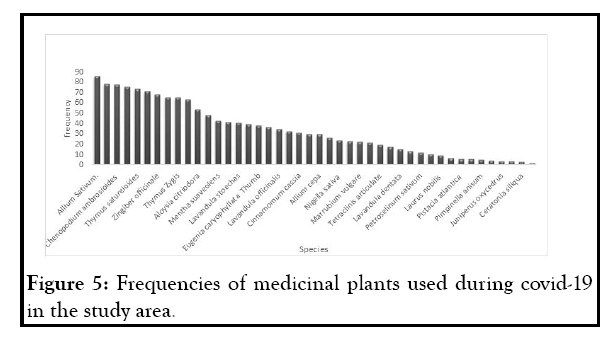
Figure 5: Frequencies of medicinal plants used during covid-19 in the study area.
The comparison of the results of the present study with others carried out at the national level, it is found that these species are widely used in the study area and in other regions of Morocco [26,32]. Moreover, the majority of these plants cited in this study have been used in Moroccan traditional Medicine to treat diseases with symptoms similar to those caused by coronavirus [28,33-34].
Prevention and treatment of COVID 19 symptoms in the study area
The results of the principles symptoms of COVID 19treated by ethno medicinal plants are presented in Figure 6. According to the results of the ICF values, it was found that the inhabitants used medicinal plants to treat a number of symptoms related to COVID 19, such as fever, cough, fatigue, diarrhea, headache, and breathing difficulties (Figure 6). Six symptoms were treated with medicinal plants by the population in the study area. In general, the results obtained show that the category with the highest degree of informant agreement (ICF) was fever (ICF=0.90), followed by cough (ICF=0.80), headache with (ICF=0.73), breathing difficulties (ICF=0.50), diarrhea (ICF=0.38), and lastly fatigue (ICF=0.25). Most of the respondents indicate that these plants have beneficial effects, inclu33ding the control of fever, cough, headache and diarrhea as well as other respiratory symptoms such as asthma, rhinitis, flu, allergies, bronchitis and pneumonia (Table 3).
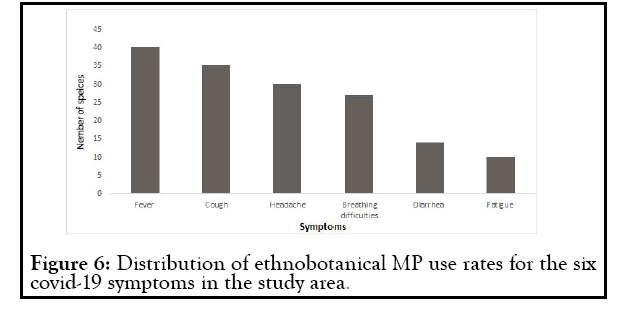
Figure 6: Distribution of ethnobotanical MP use rates for the six covid-19 symptoms in the study area.
| Use categories | Number of taxa | Number of use reports | ICF |
|---|---|---|---|
| (Nt) | (Nur) | ||
| Fever | 40 | 412 | 0.9 |
| Cough | 35 | 179 | 0.8 |
| Headache | 30 | 112 | 0.73 |
| BreathingDifficulties | 27 | 54 | 0.5 |
| Diarrhea | 14 | 22 | 0.38 |
| Fatigue | 10 | 13 | 0.25 |
Table 3: ICF values for each of the symptoms of COVID-19.
Different parts of the plant are used by the respondents to relieve from main symptoms of COVID-19. Leaves and stems (40%) or leaves only (20%) are the most frequently used part of the medicinal plants, followed by the flowers (12%), and fruit (6%). The choice of leaves can be explained by the ease of harvesting as well as their richness in bioactive components. This confirms that the leaves are the most used parts of the plant for the preparation of medicines in Morocco and Africa [35-38]. Furthermore, most of the interviewees indicated that some species are used for the treatment of several diseases at the same time; this is the case for example Chenopodiumambrosioides which is used in case of fever and headaches. The interviews also revealed that these people took remedies based on medicinal plants in the form of fresh or dried material mixed with certain components and solutions like milk, water, oils and honey. Regarding the toxicity and the mode of preparation of these species have been reported in ethnobotanical studies of medicinal plants in Morocco [39,40].
According to several studies, the majority of the plants used in COVID 19 contain many bioactive components including essential oils, flavonoids, phenolics, carotenoids, steroids, glycosides and alkaloids. These compounds have properties such as antimicrobial, antifungal, antiviral, antioxidant, muscle relaxant, and analgesic, as well as various effects on the respiratory system, have been reported [41-46]. Due to the lack of in vitro studies and clinical trials of these plants on SARS-COV2 activity However, some compounds of these plants could be responsible for the disappearance of the characteristic symptoms of COVID-19.
The present work has allowed us to shed light on the ethno medicinal plant species used by the inhabitants of the Central High Atlas in Morocco for the prevention or treatment of the main symptoms of COVID-19. According to the ethno botanical survey, the use of medicinal plants during COVID-19 is widespread in the study area. This study shows that 50 species are used in traditional Medicine during the COVID-19 pandemic for protective purposes. The most commonly used medicinal plant species were: Allium sativum, Trigonellafoenumgraecum, Chenopodiumambrosioides, Lavandulapedunculata, Thymus satureioide, Eucalyptus globulus, Zingiber officinale, Alpiniaofficinarum, Thymus Zygis, Rosmarinus officinalis, Aloysiacitriodora, Menthapulegium. Of all the symptoms treated, fever, cough, fatigue, diarrhea, and headache and breathing difficulties were the most frequently cited by the respondents? Leaves and stems or leaves only are the most used part in treatment of these symptoms, while the most common methods of preparation include decoction, infusion and maceration. It is difficult to conclude that medicinal plants have a beneficial effect of minimizing and preventing against SARS-COV2. However, the results could serve as a basis for conducting more precise studies to assess the safety and value clinical of the main crude and bioactive compounds derived from these plants and to clarify their mechanisms of action in the fight against COVID-19.
The author would like to thank all populations of the Central High Atlas of Azilal. In particular, who responded to the survey questionnaires?
[Cross refer] [Google scholar] [PubMed]
[Cross refer] [PubMed]
[Cross refer] [Google scholar] [PubMed]
[Cross refer] [Google scholar] [PubMed]
[Cross refer] [Google scholar] [PubMed]
[Cross refer] [Google scholar] [PubMed]
[Cross refer] [Google scholar] [PubMed]
[Cross refer] [Google scholar] [PubMed]
[Cross refer] [Google scholar] [PubMed]
[Cross refer] [Google scholar] [PubMed]
[Cross refer] [Google scholar] [PubMed]
[Cross refer] [Google scholar] [PubMed]
[Cross refer] [Google scholar] [PubMed]
[Cross refer] [Google scholar] [PubMed]
[Google scholar] [PubMed]
[Cross refer] [Google scholar] [PubMed]
[Cross refer] [Google scholar] [PubMed]
Citation: Moujane A, Boulli A, Ouigmane A, Layati E (2022) Ethnomedicinal Plants Used by the Populations of the Central High Atlas of Morocco for the Prevention and Relief of the Main Symptoms Similar to Coronavirus Diseases. Med Aromat Plants (Los Angeles). 11:008
Received: 18-Feb-2022, Manuscript No. MAP-22-14779; Editor assigned: 21-Feb-2022, Pre QC No. MAP-22-14779(PQ); Reviewed: 07-Mar-2022, QC No. MAP-22-14779; Revised: 11-Mar-2022, Manuscript No. MAP-22-14779(R); Published: 18-Sep-2022 , DOI: 10.35284/2471-9315.22.11.436
Copyright: © 2022 Moujane A, et al. This is an open-access article distributed under the terms of the Creative Commons Attribution License, which permits unrestricted use, distribution, and reproduction in any medium, provided the original author and source are credited.